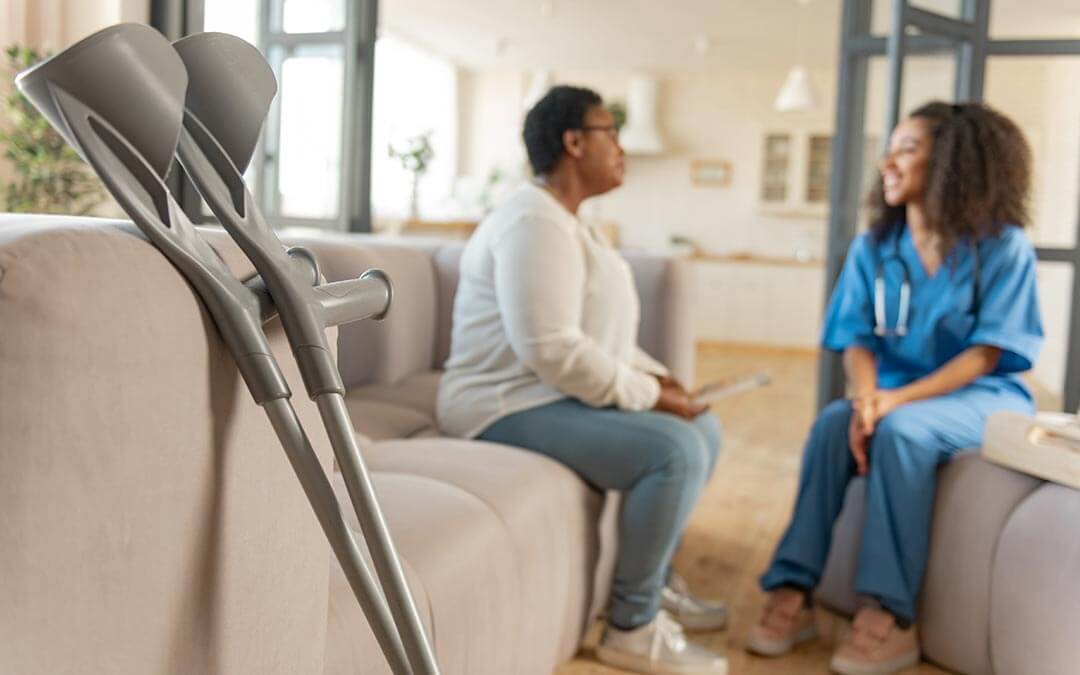Introducing 3:1 heat shrink tubing to have you labeling like a Pro

4 Ways Mobile Printing Helps Boost 5 Star Ratings
Starting next year, earning 5-star status through the Centers for Medicare & Medicaid Services (CMS) Star Rating system may offer home health agencies very tangible benefits beyond bragging rights and consumer appeal.
Introduced in 2015, the rating system was designed primarily to help consumers choose a home healthcare provider. But it has also created a standard for hospitals and other upstream referral sources looking for quality partners as they develop their home health networks.
There are two types of home health star ratings: Quality of Patient Care and Patient Survey. The Quality of Patient Care star ratings are based on eight process and outcome quality measures, including drug education on all medications provided to patients. The Patient Survey ratings are based on three patient experience measures – care of patients, specific care issues, and communication between providers and patients – from the Home Health Care CAHPS Survey (the Consumer Assessment of Healthcare Providers and Systems).
Higher scores, bigger benefits
When the Patient-Driven Grouping Model (PDGM) goes into effect in January 2020, institutional referrals will carry a higher reimbursement. That means that agencies that score higher – making them prime candidates for hospitals seeking high quality referral partners – stand to benefit the most.
As healthcare continues to explore innovative value-based payment models, agencies that earn top ratings are also going to be well-positioned to take advantage of non-traditional risk-based opportunities. And, last but not least, higher ratings can be helpful recruiting tools in today’s highly competitive labor market.
However, only 5 percent of home health agencies nationwide earned 5-star ratings for Quality of Patient Care as of April 2018, while 12 percent held 4.5 stars. The national average was 3.5.
Agencies looking to up their game – and their star ratings – would do well to consider the power of technology to support consistent, high quality care and enhance the patient experience. As vital components of robust technology solutions, mobile printers play a valuable role in helping to boost scores, particularly on patient education and communication measures.
Here are four ways mobile printers are helping:
-
Support medication management.
Mobile printers enable home health professionals to easily print updated and personalized medication lists right in the patient’s home, along with clear instructions on how to administer the medications, potential side effects to watch for and drug interaction data.
Handwriting the lists and instructions is time-consuming and prone to human error, given how rushed clinicians may be and how difficult it can be to read some handwritten materials. The risk is magnified by the fact that in many cases, patients are taking multiple drugs. By helping to ensure accuracy and adherence, the printed medication lists improve peace of mind as well as boost safety and support better outcomes. Clinicians report that this relatively simple fix is showing significant improvements.
-
Speed and facilitate appropriate treatment.
Clinicians can print patient care plans, therapy instructions, test results, medical records, follow-up visit schedules and educational materials, making it possible to convey complex information in what is often an emotionally charged situation. In addition, clinicians can print consent, waiver and refusal of service forms, and get all necessary signatures on the spot to ensure proper and desired treatment.
-
Improve care coordination.
Many patients have multiple providers who routinely visit. Access to the printed versions of up-to-date patient medical history and care plans contributes to preventing problematic gaps and overlaps in care, aids seamless hand-offs and results in a more positive patient experience.
-
Keep the focus on patient care.
The ability to quickly, easily and reliably print all necessary documents right in the patient’s home helps save busy clinicians valuable time, free them to focus on patient care rather than administrative tasks. Not surprisingly, this in turn, increases patient and family satisfaction.
Good things come in small packages
Compact, lightweight and affordable – today’s mobile printers connect seamlessly to smartphones, tablets and laptops – and it’s no surprise that they’re becoming a key addition to the homecare clinician’s toolkit. The technology is simple yet, instrumental in providing homebound patients the information they need to take charge of their recovery. And that can prove key to boosting satisfaction – and the increasingly important star rating scores.






